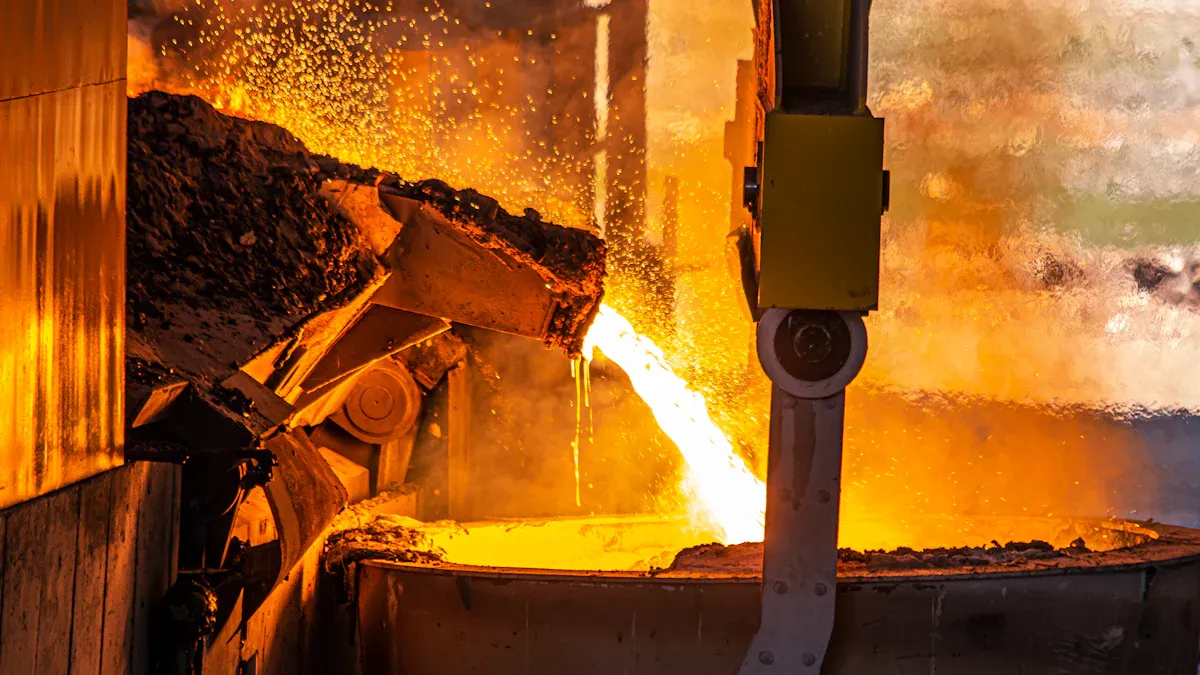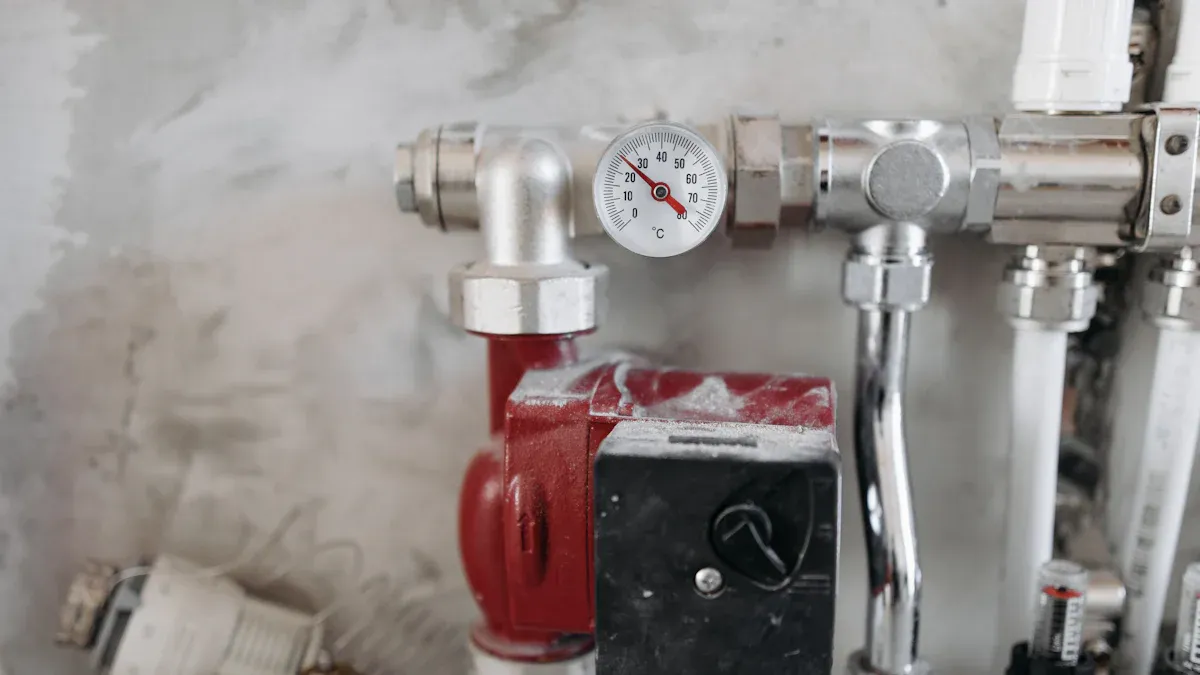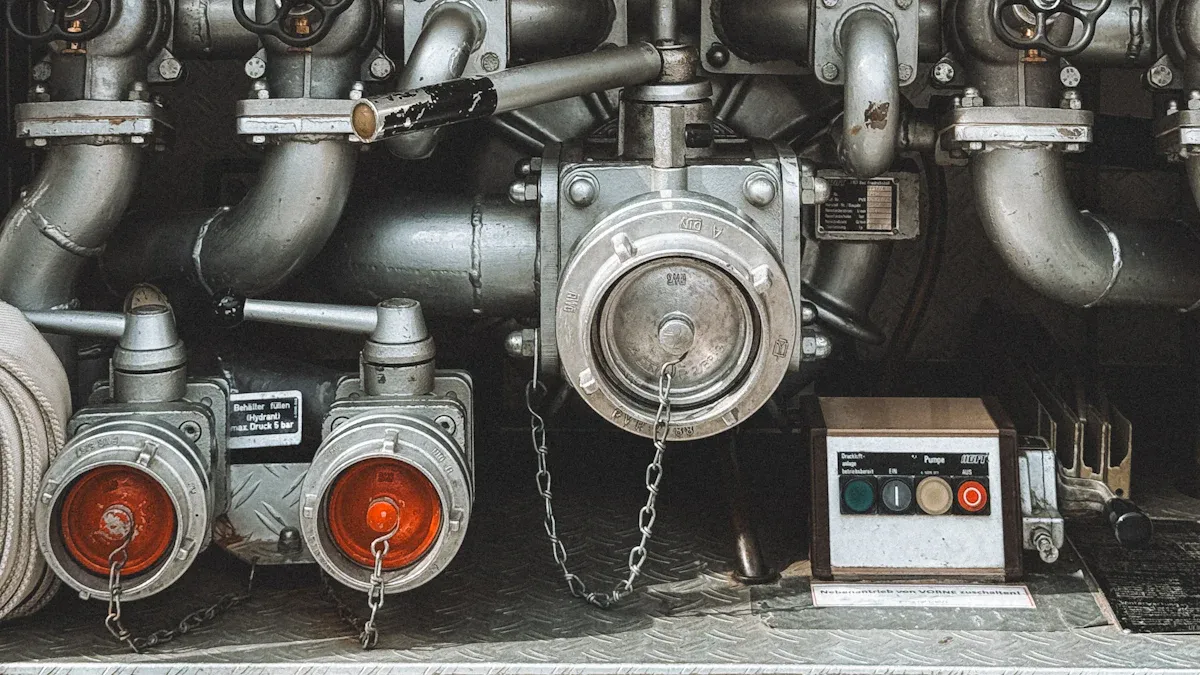
Troubleshooting pump casting starts with a sharp eye for changes. He should spot leaks, odd noises, or slowdowns right away. Safety always comes first before touching any pump investment casting. They can fix problems faster when they know if stainless steel pump investment casting needs a special approach.
Key Takeaways
- Always start troubleshooting with a careful visual inspection and follow strict safety precautions before working on pump casting equipment.
- Regular maintenance and operator training help prevent common problems like leaks, noises, and overheating, keeping pumps reliable and safe.
- Using stainless steel and the Silica Sol process improves pump durability, corrosion resistance, and precision, ensuring longer-lasting equipment.
Pump Casting Quick Initial Assessment
Visual Inspection Checklist
A quick look can reveal a lot about pump casting equipment. He should start by checking for obvious signs of trouble. Here’s a simple checklist to follow:
- Look for any leaks or puddles around the base.
- Check if bolts or fasteners seem loose or missing.
- Inspect the surface for cracks, rust, or other damage.
- Watch for any unusual buildup of dirt or debris.
- Make sure all labels and safety signs are clear and readable.
If he spots anything out of the ordinary, he should note it right away. Sometimes, a small leak or a missing bolt can point to a bigger issue. A careful inspection helps catch problems before they get worse.
Safety Precautions Before Troubleshooting
Safety comes first every time someone works with pump casting equipment. He should always turn off the power before touching any part of the machine. Wearing gloves, goggles, and protective clothing keeps him safe from sharp edges or hot surfaces.
Tip: He should keep a fire extinguisher and first aid kit nearby. Accidents can happen fast, so it’s smart to stay prepared.
He should also make sure the area is well-lit and free from clutter. If he feels unsure about any step, he should ask a supervisor or a trained technician for help. Staying safe means he can focus on fixing the problem without extra risk.
Common Pump Casting Issues and Solutions

Equipment Not Starting
When pump casting equipment refuses to start, it can feel frustrating. He should check the power supply first. Sometimes, a tripped breaker or a loose plug causes the problem. If the power looks fine, he can inspect the control panel for any warning lights or error codes. Many modern systems display a code when something goes wrong.
He should also look at the emergency stop button. Someone might have pressed it by mistake. If the button is engaged, he needs to reset it before the equipment will run. Sometimes, a blown fuse or a faulty relay can stop the pump from starting. Swapping out these parts often solves the issue.
Tip: He should always double-check the user manual for specific troubleshooting steps. Each pump casting system may have unique startup procedures.
Inconsistent Flow or Pressure
Inconsistent flow or pressure can signal a deeper problem inside the pump casting equipment. He should start by checking for clogged filters or blocked pipes. Dirt and debris often build up over time, slowing down the flow. Cleaning or replacing filters can restore normal operation.
He should also inspect the pump’s seals and gaskets. Worn or damaged seals let air into the system, which causes pressure drops. Sometimes, the problem comes from a worn impeller or a misaligned shaft. These parts need to spin smoothly to keep the flow steady.
A quick checklist for inconsistent flow or pressure:
- Check for clogged filters or pipes.
- Inspect seals and gaskets for wear.
- Listen for air leaks.
- Examine the impeller and shaft alignment.
Unusual Noises or Vibrations
Strange noises or vibrations often mean something is wrong inside the pump casting equipment. He might hear grinding, rattling, or squealing sounds. These noises usually come from loose parts, worn bearings, or misaligned components.
He should tighten any loose bolts and check the alignment of the pump and motor. If he finds worn bearings, he needs to replace them right away. Ignoring these sounds can lead to bigger problems, like broken shafts or damaged casings.
Note: If the noise gets louder or the vibration feels stronger, he should shut down the equipment and call a technician. Running the pump in this condition can cause serious damage.
Leaks or Spills
Leaks or spills around pump casting equipment can create safety hazards and signal equipment failure. He should look for puddles under the pump or wet spots on the casing. Leaks often come from worn seals, cracked housings, or loose fittings.
He can use a wrench to tighten fittings, but he should avoid over-tightening, which can crack the metal. If he finds a damaged seal or gasket, he should replace it as soon as possible. Sometimes, corrosion or rust eats through the casing, causing leaks. In these cases, he may need to replace the affected part.
A quick response to leaks keeps the work area safe and prevents further damage to the pump casting system.
Overheating or Excessive Wear
Overheating and excessive wear can shorten the life of pump casting equipment. He should monitor the temperature of the pump during operation. Most manufacturers recommend keeping the temperature between 120°F and 140°F. If the temperature climbs above this range, the pump may overheat, causing hydraulic fluid to break down and parts to wear out faster.
He can use the following table to understand safe temperature ranges and what they mean for pump casting equipment:
| Parameter | Temperature Range / Value | Significance in Overheating or Wear Detection |
|---|---|---|
| Manufacturer Operating Range | -20°F to 200°F (-20°C to 70°C) | Controls thermal expansion/contraction to prevent leakage |
| Normal Operating Temperature | 120°F to 140°F (50°C to 60°C) | Keeps hydraulic fluid healthy and prevents overheating |
| Heater Core Temperature Range | 140°F to 180°F | Higher values mean increased wear and heat production |
| Fluid Viscosity Range | 20-50 centistokes | Maintains seals and prevents overheating |
If he notices temperatures outside these ranges, he should stop the pump and let it cool down. He should also check for blocked cooling passages or low fluid levels. Keeping an eye on temperature and fluid viscosity helps him catch problems early and avoid costly repairs.
Step-by-Step Pump Casting Troubleshooting Process

How to Isolate the Problem
He should start by narrowing down the source of the issue. First, he can listen for any strange sounds or look for leaks. Next, he can check if the problem happens only during certain operations or all the time. He should ask himself, “Does the pump casting equipment fail right after startup, or does it stop after running for a while?” By answering these questions, he can focus on the right area. If he finds a leak, he should trace it back to its source. If the pump vibrates, he can check the alignment or look for loose bolts.
Tools and Techniques for Diagnosis
He needs the right tools to diagnose pump casting equipment. A flashlight helps him see inside dark spaces. A wrench lets him tighten or loosen bolts. He can use a stethoscope or a screwdriver to listen for odd noises. Sometimes, a pressure gauge or a thermometer gives him clues about flow or temperature problems. He should keep a notepad handy to write down what he finds.
Tip: He should take photos of any damage. Pictures help when he needs to show a technician or order parts.
When to Call a Professional
Some problems need expert help. If he finds a crack in the pump casting or sees sparks from the motor, he should stop and call a professional. He should also get help if he cannot find the cause after basic checks. Safety comes first. If he feels unsure, he should not risk it. A trained technician can fix complex issues and keep the equipment running safely.
Preventive Tips for Pump Casting Equipment
Regular Maintenance Routines
Regular maintenance keeps pump casting equipment running smoothly. He should set up a schedule for checking the equipment. A simple checklist helps him remember what to inspect each time. For example, he can look at seals, check for leaks, and listen for odd noises. Cleaning filters and removing debris from around the pump also help prevent problems.
A good routine might look like this:
- Inspect seals and gaskets weekly.
- Clean filters every month.
- Check bolts and fasteners for tightness.
- Test the pump’s temperature during operation.
- Record any changes or issues in a logbook.
Tip: He should always use the manufacturer’s guidelines for maintenance. These steps help him catch small issues before they turn into big repairs.
Operator Training and Best Practices
Proper training makes a big difference in how well pump casting equipment works. He should learn how to start, stop, and monitor the pump safely. Training sessions teach him what warning signs to watch for, like leaks or strange sounds. He should also know how to shut down the equipment in an emergency.
Best practices include:
- Following safety rules at all times.
- Reporting any problems right away.
- Keeping the work area clean and organized.
- Using the right tools for each job.
When he follows these tips, he helps the team avoid accidents and keeps the pump casting system in top shape.
Advantages of Silica Sol Process and Stainless Steel in Pump Casting
Benefits of Silica Sol Process
The Silica Sol process gives pump casting equipment a real edge. This method uses a fine silica-based slurry to create smooth, detailed molds. He can expect a much better surface finish on each part. That means less grinding or polishing after casting. The process also allows for tight tolerances. He gets parts that fit together well, which helps pumps run smoothly.
Here are some key benefits:
- High Precision: The Silica Sol process produces parts with exact shapes and sizes.
- Smooth Surface: Less finishing work saves time and money.
- Complex Shapes: He can cast intricate designs that other methods struggle with.
- Low Defect Rate: Fewer cracks or pores mean stronger, more reliable parts.
Note: Many pump manufacturers choose Silica Sol for its ability to handle stainless steel and other tough alloys.
Advantages of Stainless Steel Material
Stainless steel stands out as a top choice for pump casting. This metal resists rust and corrosion, even in harsh environments. He can count on stainless steel parts to last longer, especially when pumps handle water or chemicals.
Some main advantages include:
- Corrosion Resistance: Stainless steel keeps pumps safe from rust and chemical damage.
- Strength and Durability: The material holds up under pressure and heavy use.
- Easy to Clean: Smooth surfaces make maintenance simple.
- Temperature Tolerance: Stainless steel works well in both hot and cold conditions.
| Feature | Stainless Steel Benefit |
|---|---|
| Corrosion Resistance | Prevents rust and leaks |
| Strength | Handles high pressure |
| Cleanability | Reduces buildup and bacteria |
| Temperature Stability | Works in extreme conditions |
He gets peace of mind knowing his pump casting equipment will perform well and last longer with stainless steel.
He can keep pump casting equipment running smoothly by following a few simple steps:
- Check for visible issues first.
- Stick to a regular maintenance routine.
- Stay alert for warning signs.
Ongoing training helps everyone handle pump casting problems with confidence and keeps equipment reliable.
FAQ
How often should he check pump casting equipment for problems?
He should inspect the equipment weekly. Regular checks help him catch leaks, loose bolts, or odd noises before they turn into bigger issues.
What should he do if the pump makes a loud noise?
He should stop the pump right away. Loud noises often mean loose parts or worn bearings. He can check for loose bolts or call a technician.
Can he use regular steel instead of stainless steel for pump casting?
Stainless steel resists rust and lasts longer. Regular steel may corrode quickly, especially with water or chemicals. He should always choose stainless steel for better performance.
